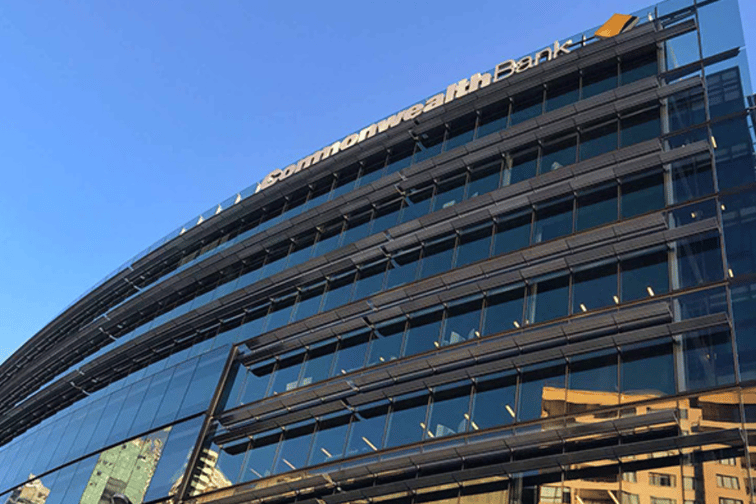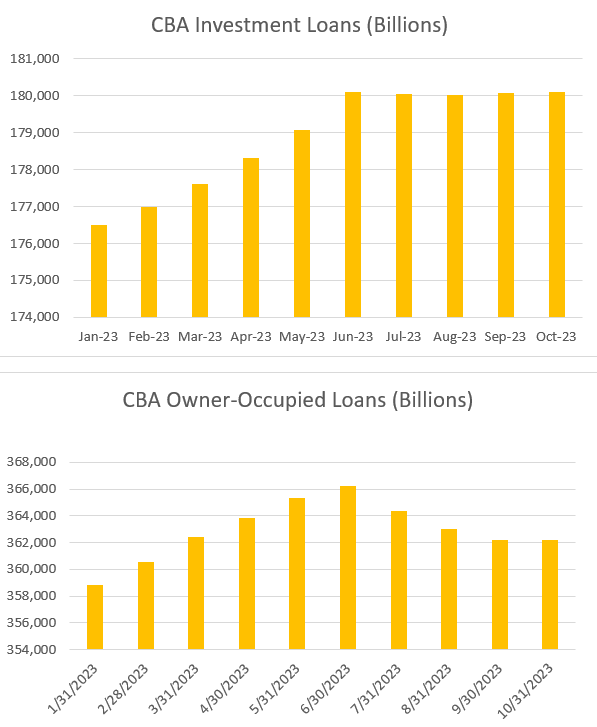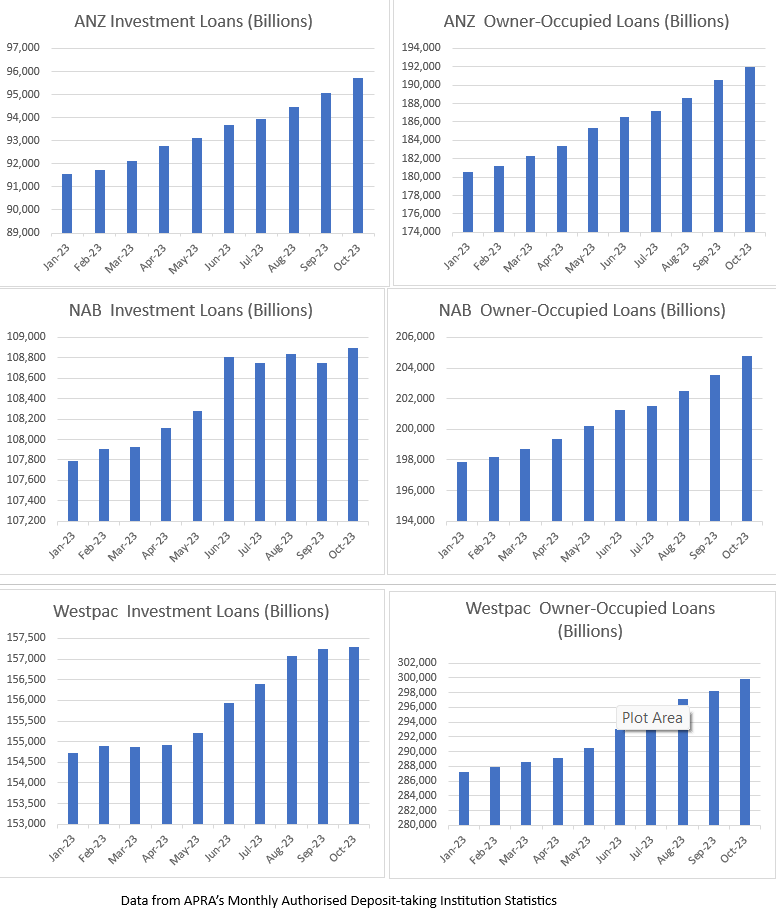

Commonwealth Bank of Australia’s (CBA) mortgage books have marginally increased over October stopping a three-month slide that was unprecedented in the history of Australia’s largest lender.
Data from APRA showed CommBank’s owner-occupied loans, which lost over $4 billion between July and September, ended October with a slight $23 million increase.
CBA’s investor loans, which have plateaued since the end of the financial year, also saw a modest increase of $41 million over the month.
To put the bank’s recent slide in perspective, out of the 185 months between March 2004 and June 2019, CBA had only eight months where its mortgage portfolio declined – none of which were over consecutive months.

Overall, Commonwealth Bank has had a turbulent year. In November 2023, its total mortgage portfolio was $542 billion, up from $529 billion at the same last year.
This was driven by an increase in refinancing activity as lenders looked to cash in on low fixed rates ending, offering sharp rates and cashbacks to entice borrowers.
However, by June, CBA had ended its cashback offer and seemingly reeled back pushing for new business.
The bank said its decline in home loans was “a consequence of our focus on increasing our share of Australian home loan revenue”, reflecting ongoing competition and a “disciplined approach to managing margins”.
CBA also said it has focused on its direct channel, with new proprietary home loan findings in the quarter “broadly flat” while lower margin new broker fundings declined by $5 million over the same period.
While CBA may had experienced an unusual mortgage squeeze, its profits remained consistent over the quarter, posting an unaudited cash profit of $2.5 billion. This was flat compared to last quarter’s average and up 1% year-on-year.
This growth was driven by an 11% increase in business lending and a 5.7% rise in household deposits. This also comes after a strong mid-year result that showcased CBA’s expansion in asset finance.
This was mainly propelled by the owner-occupied loans, with investment loans stagnating across the market.
One of the biggest winners over 2023 was Macquarie – the mortgage industry’s fifth biggest lender.
Macquarie increased its home loan lending $11.6 billion year-on-year, which equates to around 10% of its total mortgage book.
The next five biggest mortgage lenders – Bank of Queensland, Bendigo and Adelaide Bank, ING Bank, Suncorp-Metway, and HSBC Bank – had mixed fortunes.
Bank of Queensland actually decreased its mortgage book size year-on-year, writing $59.7 billion this November compared to $60.1 billion in November 2022.
Suncorp-Metway, which primarily deals with owner-occupied loans and therefore avoided the malaise in investor sentiment throughout the year, was the winner out of this group.
The bank increased its book from $48.7 billion to $51.5 billion in a year. Collectively, the group of banks increased their home loan books by $7 billion.
Overall, while other banks have taken a chunk out of CBA’s mortgage market share over the past year, Australia’s largest bank is likely to maintain its status for some time.

